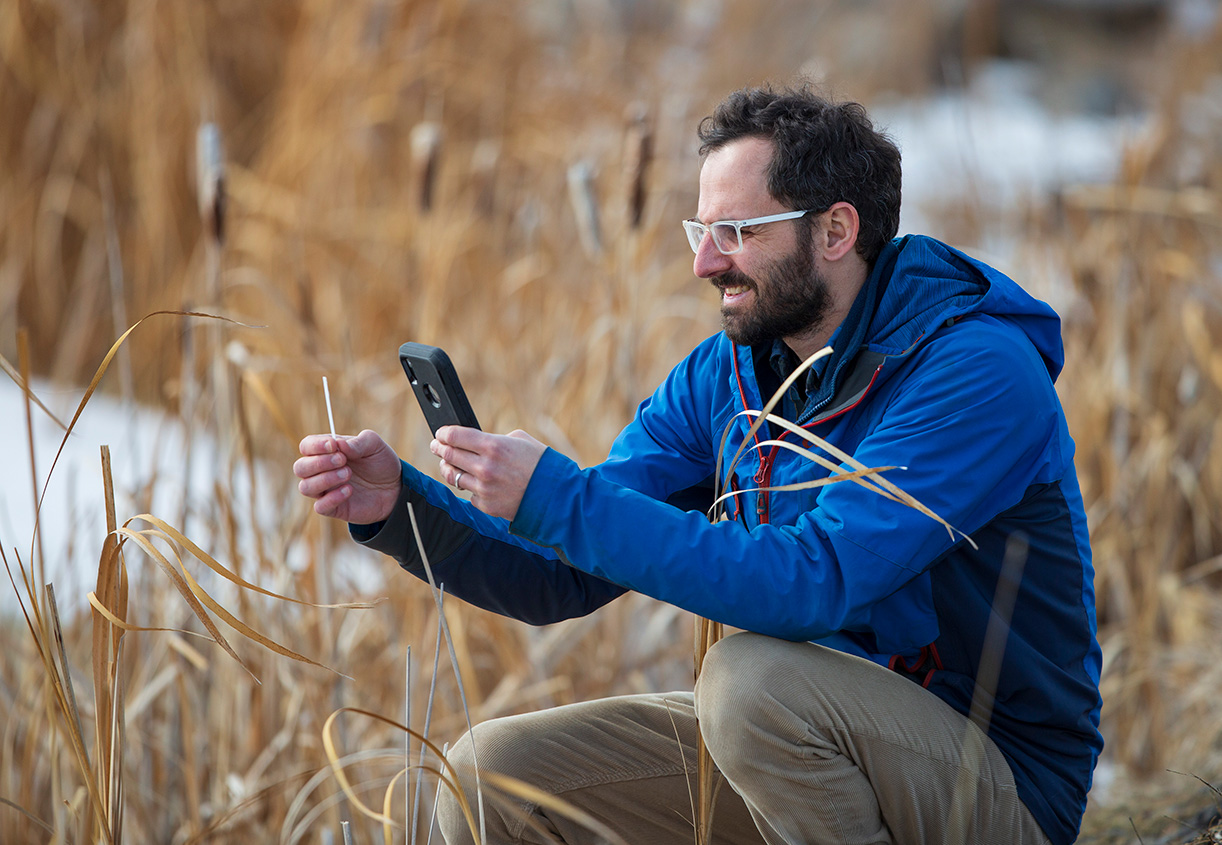
New USask app tracks causes of algae bloom
A new University of Saskatchewan smartphone app will help farmers and communities identify hotspots of nutrient contamination in freshwaters and possibly predict where algae blooms are likely to grow.
This article first ran as part of the 2020 Young Innovators series, an initiative of the USask Research Profile and Impact office in partnership with the Saskatoon StarPhoenix. [Read on The StarPhoenix]
By Federica Giannelli
A new University of Saskatchewan (USask) smartphone app will help farmers and communities identify hotspots of nutrient contamination in freshwaters and possibly predict where algae blooms - slimy plant-like green organisms that hinder water quality - are likely to grow.
"Tracking how and where agricultural nutrients, which help crops grow, may be washed away with rainfalls and snowmelt is a major concern for both researchers and the public, and that's where our app comes in," said Environment and Climate Change Canada scientist Diogo Costa.
"Our app can help identify hotspots of contamination and encourage remedial action to reduce nutrient pollution."
In collaboration with computer scientists Banani Roy and Kevin Schneider, Costa developed the app as part of his recent post-doctoral work in hydrology with colleagues John Pomeroy, Helen Baulch, and Jane Elliott.
Easy to use for non-scientists, the USask Nutrient app can measure real-time concentrations of nutrients such as nitrogen and phosphorus in water - information helpful for better environmental monitoring. When washed away from agricultural fields, these commonly used fertilizers may end up worsening algae growth.
An excess of nutrients in freshwater poses a risk not only to water quality, but also for plant and animal diversity in aquatic environments. It is estimated that recurring algae blooms on Lake Erie may cost the Canadian government up to $5.3 billion in remediation measures over the next 30 years.
The app has been designed for community-based monitoring including by non-profit groups, Indigenous communities, and students. It helps to easily track water quality by simply using a phone camera and cheap water nutrient test kits available on the Internet and in local pet shops.
"Community-based monitoring creates awareness of environmental problems and provides tremendous opportunities to address the need for research data resulting from lack of stable funding for monitoring programs," said Costa.
"Apps such as ours are especially promising due to their potential to reach a large user base and for their built-in location tracking technology."
After immersing a color-sensitive nitrate testing strip from the kit into the water, users can take a photo of the stick using the app, available for Android on Google Play and iOS in the Apple Store. The app interprets the colors of the strip in the photo, offering more reliable, precise reading of the nutrient concentration in the water than could be done just with the human eye. The process is faster and cheaper than regular lab analysis.
The results can be saved on the phone and sent to a USask database that creates a map of the nutrient hotspots available on the app's website.
"The app is intended for quick, real-time monitoring use for the public and researchers but does not yet have the accuracy required to replace traditional methods," said Pomeroy, Canada Research Chair in Water Resources and Climate Change at USask and Costa's former supervisor.
"While our app is a reasonably accurate field tool, lab analysis is still crucial for obtaining the measurements necessary to design the right water management strategies to limit algae growth and nutrient spread into our water sources."
So far, Costa and Pomeroy have had 20 people test the app in rivers, wetlands and lakes across Canada. They will expand the testing to a larger community and will keep improving the accuracy of the app with help from USask computer science researchers.
The project is funded by Environment and Climate Change Canada and the USask Global Water Futures research program.
Watch the video on how to use the app: https://www.youtube.com/watch?v=IrSRGjIJ6eo&feature=emb_logo
Federica Giannelli is a graduate student intern in the University of Saskatchewan research profile and impact unit. This content runs through a partnership with The StarPhoenix.
